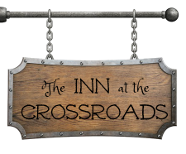Dance to the beat of the rain, little Fern,
And spread out your palms again,
And say, Tho’ the sun
Hath my vesture spun,
He had labored, alas, in vain,
But for the shade
That the Cloud hath made,
And the gift of the Dew and the Rain.
Then laugh and upturn
All your fronds, little Fern,
And rejoice in the beat of the rain!
-John Banister Tabb, “Fern Song”, 1894
Our Thoughts:
Fiddleheads are a sure sign of spring here in the North East, and the fact that they are edible make them doubly exciting! They are an excellent foraging food, as they can be eaten raw or cooked. If you plan on harvesting these baby ferns on your lonesome, be sure that you are trimming from the correct variety, usually Ostrich Fern, and that you harvest no more than three fronds per plant. The ferns only shoot up 5 to 7 new fronds a year, and you sure want to have some for next spring as well!
As for the taste, everything is better when browned in butter, and the same goes for fiddleheads. They are reminiscent of asparagus in taste, slightly bitter. The butter gets trapped in its unfurled leaves, tempting you to play with your food and uncurl the fronds to reach the best parts.
Why it should be in the Next Book:
There are several cases where characters in the books have to forage desperately for something to eat. They resort to eating all sorts of dreadful things, but if they had some fiddleheads, they would be all set. Well, maybe not quite. But less likely to die of scurvy!
Fiddleheads Recipe
Ingredients:
- 2 cups trimmed and washed fiddleheads
- pat of butter (about the width of your thumb)
- salt and pepper to taste


Fiddleheads are great, no doubt, but please be sure to warn your readers that there are several similar looking plants that are toxic! Don’t want people eating Bracken Ferns by mistake.
Endearing little morsels…and so rewarding to hunt down in the spring. I echo the warning to make sure you have the right ones…there are some ferns that look like they would better match a science fiction book.
Fiddleheads are something I have always wanted to try but they just do not seem to be available whatsoever in the UK. I’ll have to keep an eye out in nurseries and garden centres for the Ostrich fern but that lacks the fun of foraging.
From what I’ve been able to research, Ostrich, or Shuttlecock Ferns are not native to the UK, and generally can’t be found kicking around in the forest. I’m not sure where in the UK you live, but I found this awesome site, The London Forager, that has some great ideas for foraging in unlikely places. Goodluck!
I had never heard of fiddleheads till today when driving around where I will be moving to in New Brunswick to find people are selling them on the side of the road! Now I need to save this recipe and make it when I move
I look forward to fiddleheads every spring. Our greenmarkets in NYC always seem to have them. When preparing them, I blanch them first. This process seems to remove some of the bitterness, and the end prodect is no less crunchy. I tend to use olive oil rather than butter, and a little dash of lemon juice rounds out the dish nicely (also some minced garlic is nice as well).
I love your site, I have several reprints of medieval cookbooks and the history of food books. I am facinated with preparation, use of spices, foods that were prepared for specific holidays, etc. Ladies your site is a labor of love, it is well researched, fun and provides an opportunity for those of us obsessed with the books to immerse ourselves in this beguiling world. I am so excited to give yor recipes a try!
Thank you for all of your hard work….
I’d hate to wait on ASOIAF to make it to a spring book. I think it’s acorn-paste for foragers the whole way through.
I agree with Christine, blanching is a good idea. Also, I have used part bacon fat to sauté with, and you can crumble bacon on top. Be sure to have a little wine vinegar available to sprinkle over when serving (these cooking/serving ideas can also be applied to dandelion greens).